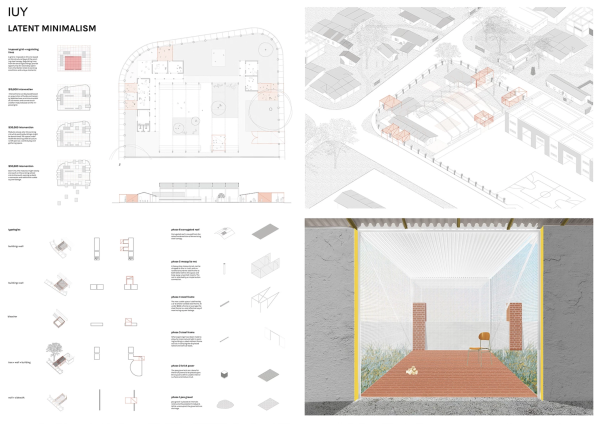Texas Architecture Student Zeke Jones Wins International Design Competition

Jones’ design will be realized through a partnership between local humanitarian organization TECHO Bolivia and French non-profit ARCHsharing and works to improve quality of life in an impoverished area
By Stacey Kaleh
In La Arboleda de Fatima, a district on the periphery of Santa Cruz, Bolivia, two unused buildings and a sports field sit on the site of an abandoned school. TECHO Bolivia, a humanitarian association that seeks to overcome poverty and precariousness for thousands of families, and ARCHsharing, a non-profit association founded by two students from the Architecture School of Marseille in France that produces competitions for students and young architects, teamed up to host a contest to rehabilitate and expand the buildings and revitalize the landscape so that the site can serve as many as 500 children between ages two and five in the area who do not have access to a kindergarten. The strategic location of the school would allow parents to work without leaving their children alone at home.
Associate Dean for Academic Affairs Cisco Gomes asked graduate students in his vertical studio, LESS, to enter the contest as a learning experience in addressing a complex problem for a real site and community by working strategically with very limited resources. The studio challenged students to consider issues of equitable access, social justice, and human-centeredness without relinquishing the important agenda of advancing design culture.
Zeke Jones, an M.Arch I student, entered the contest as part of Gomes’ course. His proposal was selected from among 300 international entries as the winner. In addition to receiving a prize of 1,500 Euro, his innovative, minimalistic design to serve the Santa Cruz community will be implemented.
“The design competition was premised as a low-cost rehabilitation to a derelict building in Santa Cruz, Bolivia. Our studio looked at the competition under the conceptual premise of restraint, which is inherent in a project with such severe economic limitations,” Jones said. “My proposal sought to leverage the latent capacities of the derelict elements onsite to maximize usable square footage. The architecture formalizes itself in brick patios enclosed with white steel frames covered in mosquito net that attaches to existing structures,” he explains, “Included in the proposal is a plan for growth that maintains the dignity of the initial proposal.”
“Agency and consequence are an integral part of our mission at The University of Texas at Austin School of Architecture; what we start here does indeed change the world, in this case literally,” remarked Gomes. “To have our students’ work recognized for both its social values and design prowess over the other finalists from France, Columbia, Italy, Argentina, Brazil, Mexico, and the United Kingdom is a terrific accomplishment. I look forward to seeing the realization of the winning design.”
In a statement from ARCHsharing President Sophie Ponthieu, the competition jury shared feedback on Jones’ design. Some of the comments included:
“A project that undoubtedly shows a distinct and personal ability to think. A definite innovation and a real contribution towards what is already being done in the world of architecture”
“A strategy that responds perfectly to the subject by its efficiency and simplicity, it’s realism towards the context.”
“A project that in addition to responding to this scenario can set an example and adapt to many different situations. With a very simple gesture, it transforms an unworthy interior space into a dignified one.”
Jones looks forward to seeing his project come to fruition, “It means a great deal to me that the project will actually be built because I believe in an accessible architecture, not just for those in immediate need, but for everyone. As a young person in the field it is a rare opportunity to have a project of one’s own realized, so I’m appreciative of the fact that we were able to enter a competition as a studio project under the guidance of Cisco.”
Learn more on the competition website.

